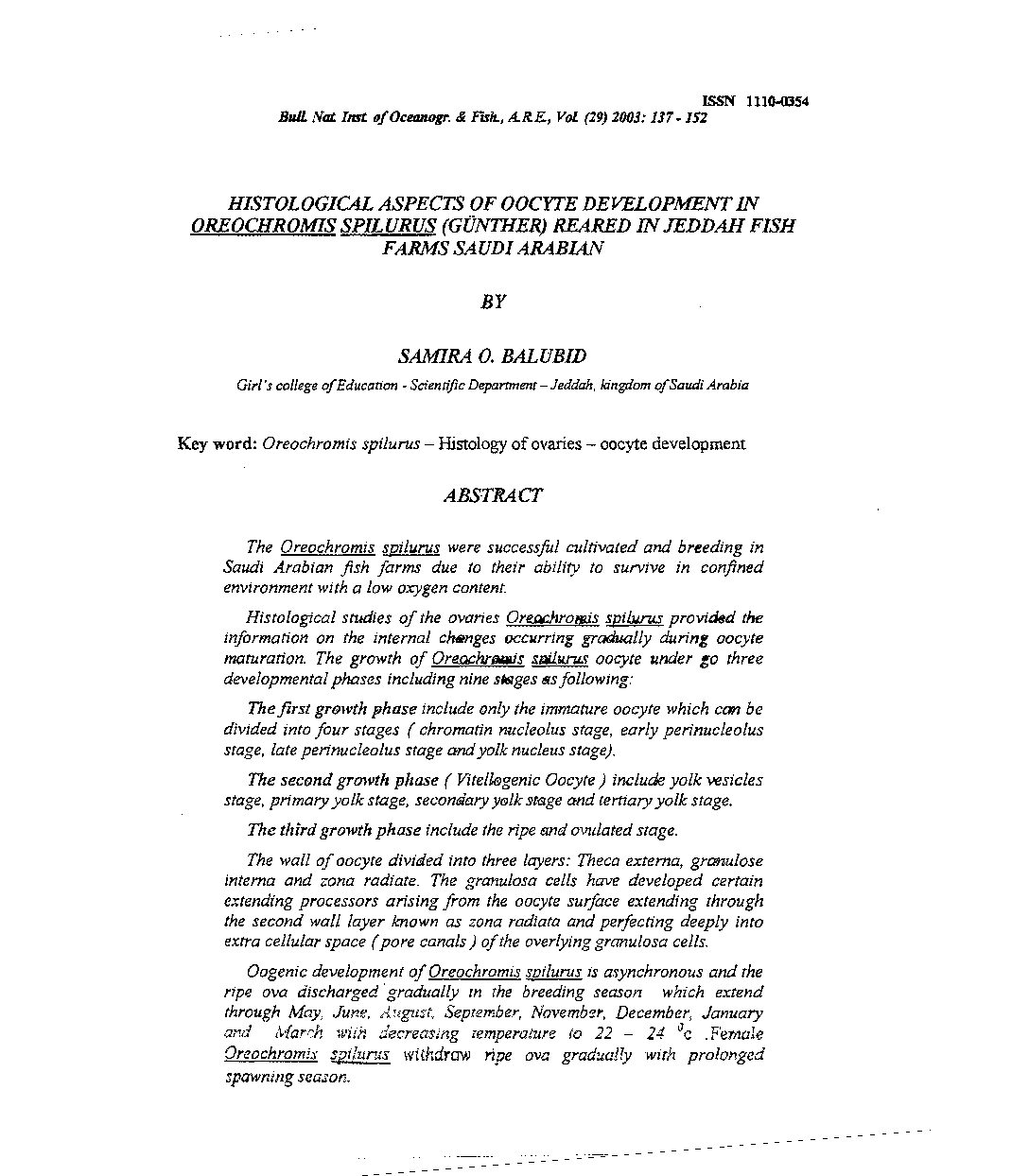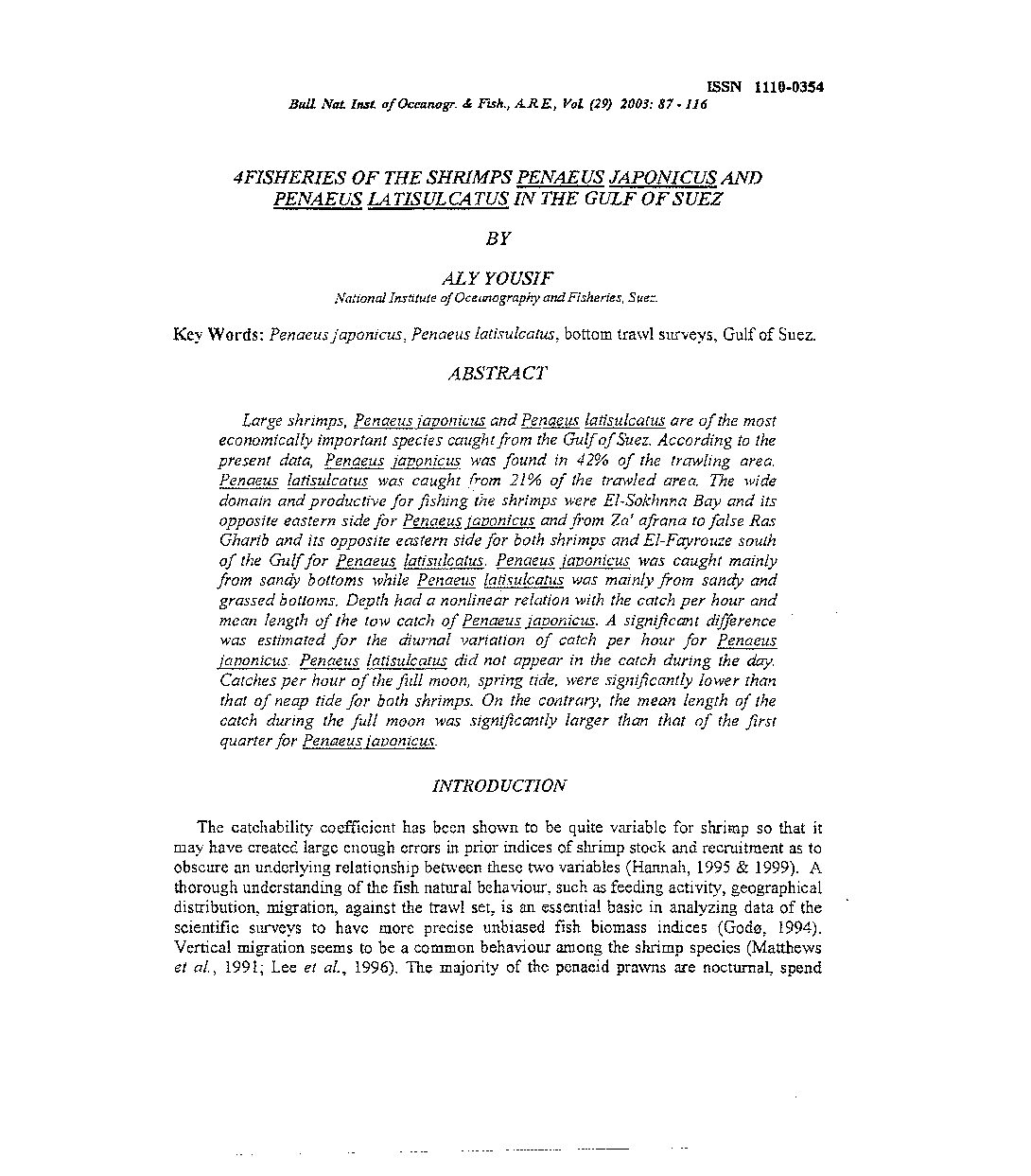Categories
vol-29HISTOLOGICAL ASPECTS OF OOCYTE DEVELOPMENT IN
OREOCHROMIS SPILURUS (GUNTHER) REARED IN JEDDAH FISH
FARMS SAUDI ARABIAN
BY
SAMIRA O. BALUBID
Girl’s college o/Education – Scientific Department – Jeddah, kingdom a/Saudi Arabia
Key word: Oreochromis spilurus – Histology of ovaries – oocyte development
ABSTRACT
The Oreochromis spilurus were successful cultivated and breeding in
Saudi Arabian fish farms due to their ability to survive in confined
environment with a low oxygen content.
Histological studies of the ovaries Ore.DdJro@s spiIwus provided the
information on the internal cJwnges ocCJlrring gradually durin: oocyte
maturation. The growth of Ore.achrlN’Jlis s.wurus oocyte under :0 three
developmental phases including nine skilges &S following:
The first grmvth phase include only the immature oocyte which can be
divided into four stages ( chromatin nucleolus stage, early perinucleolus
stage, late perinucleolus stage andyolk nucleus stage).
The second growth phase ( Viteltegenic Oocyte) include yolk vesicles
stage, primary yolk stage, seconrilary yelk 9tGge and tertiary yolk stage.
The third growth phase include the ripe t9.nd ovulated stage.
The wall ofoocyte divided into three layers: Theca externa, grcmulose
interna and zona radiate. The granulosa cells have developed certain
extending processors arising from the oocyte surface extending through
the second wall layer known as zona radiata and perfecting deeply into
extra cellular space (pore canals) ofthe overlying granulosa cells.
Oogenic development ofOreochromis spilurns is asynchronous and the
ripe ova discharged ‘gradually In the breeding season which extend
through May, June, August, September, November, December, January
and ll,larch v..’ith decreasing temperature to 22 – 24°c .Female
Oreochromis spi/un;s wHhdraw ripe ova gradually with prolonged
spawning season.







